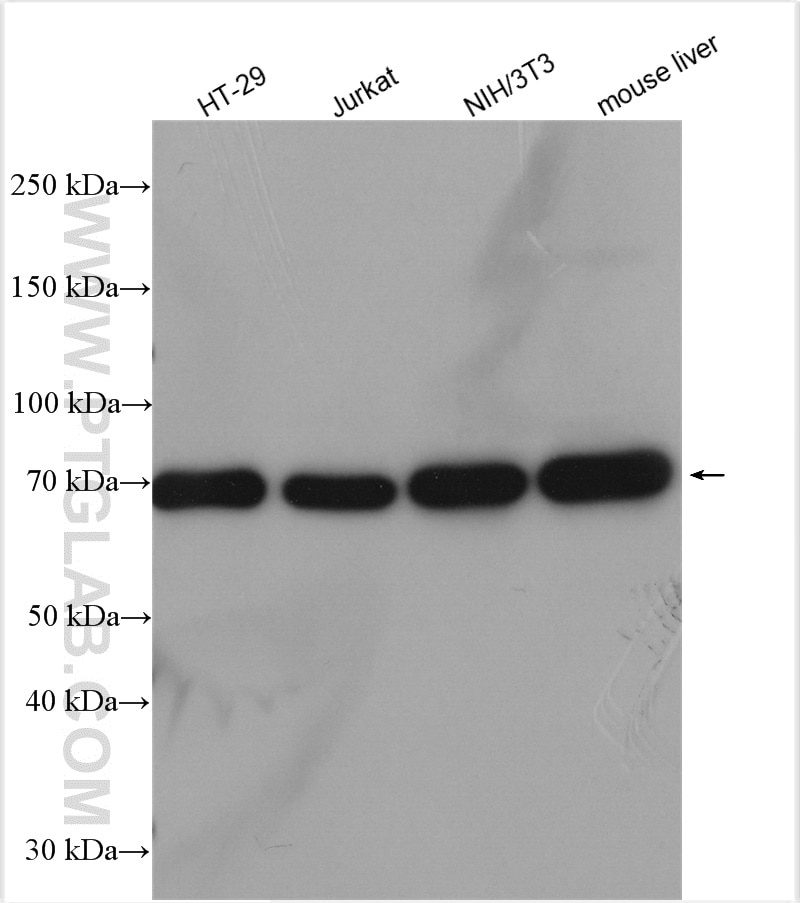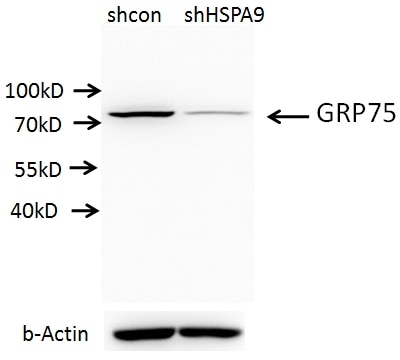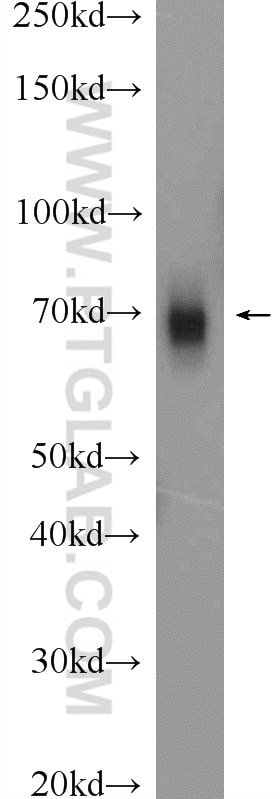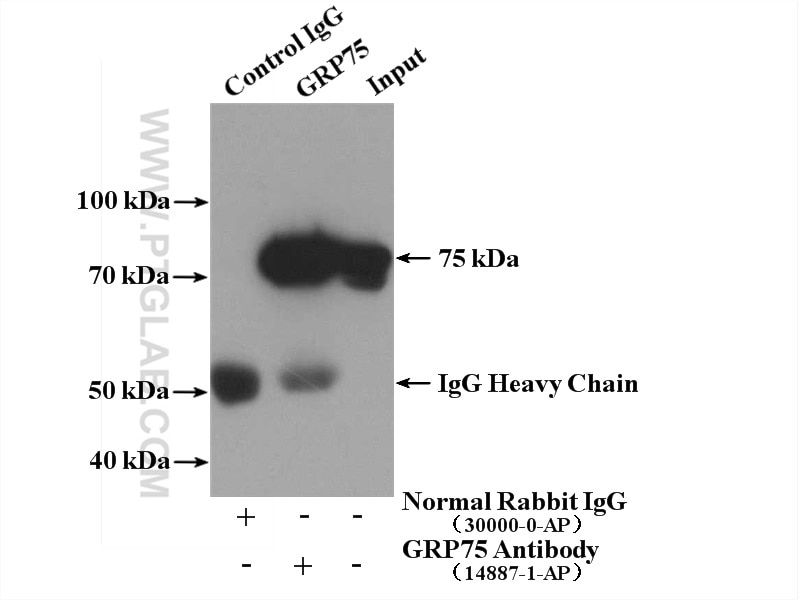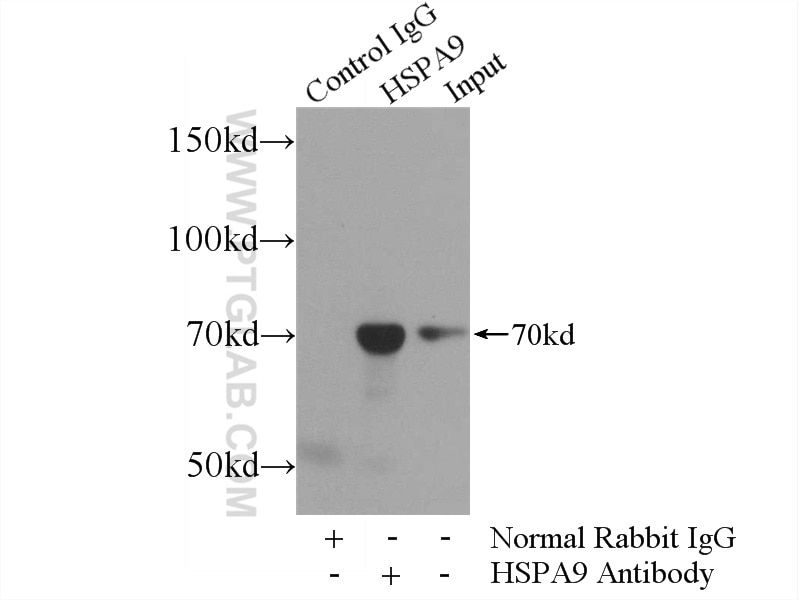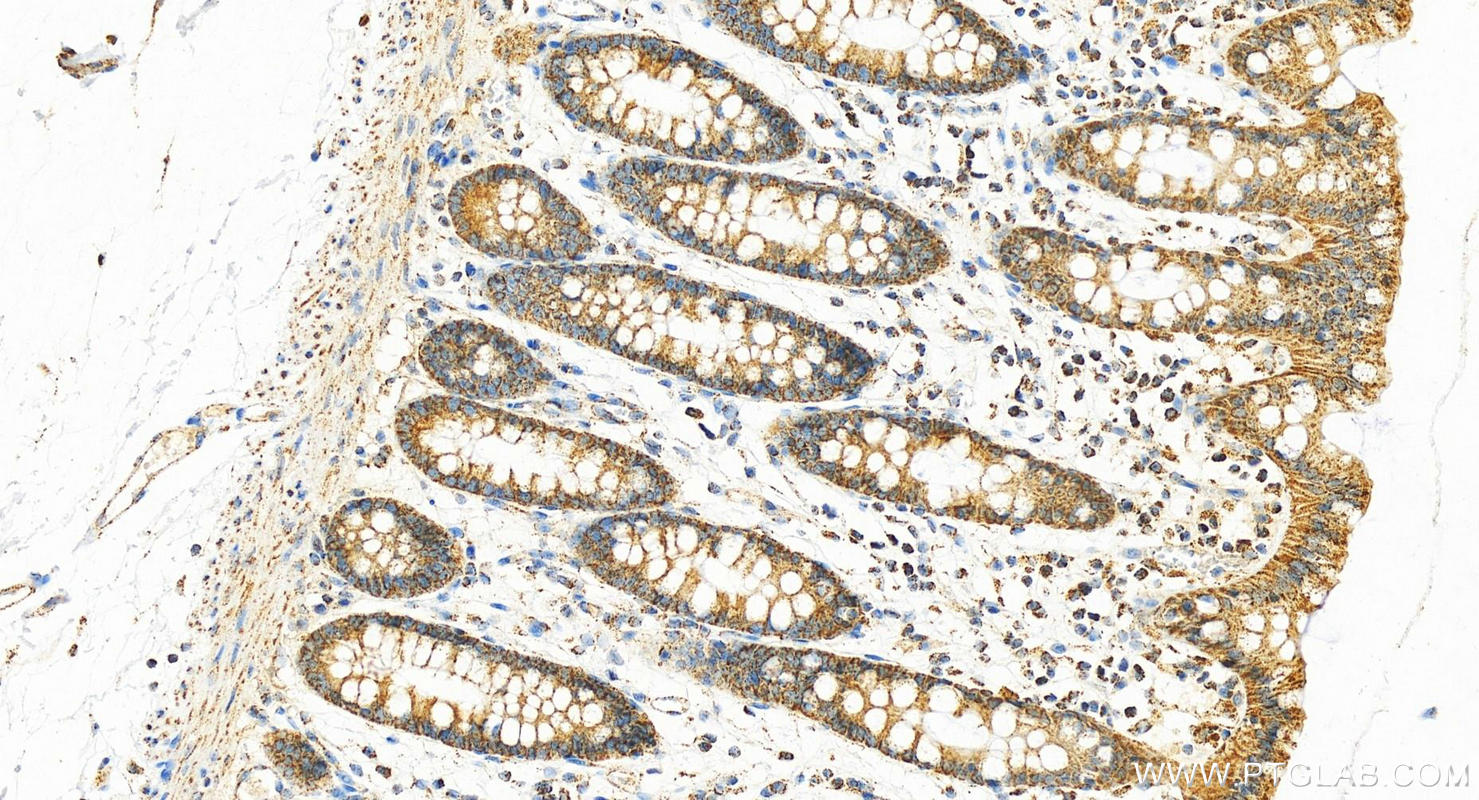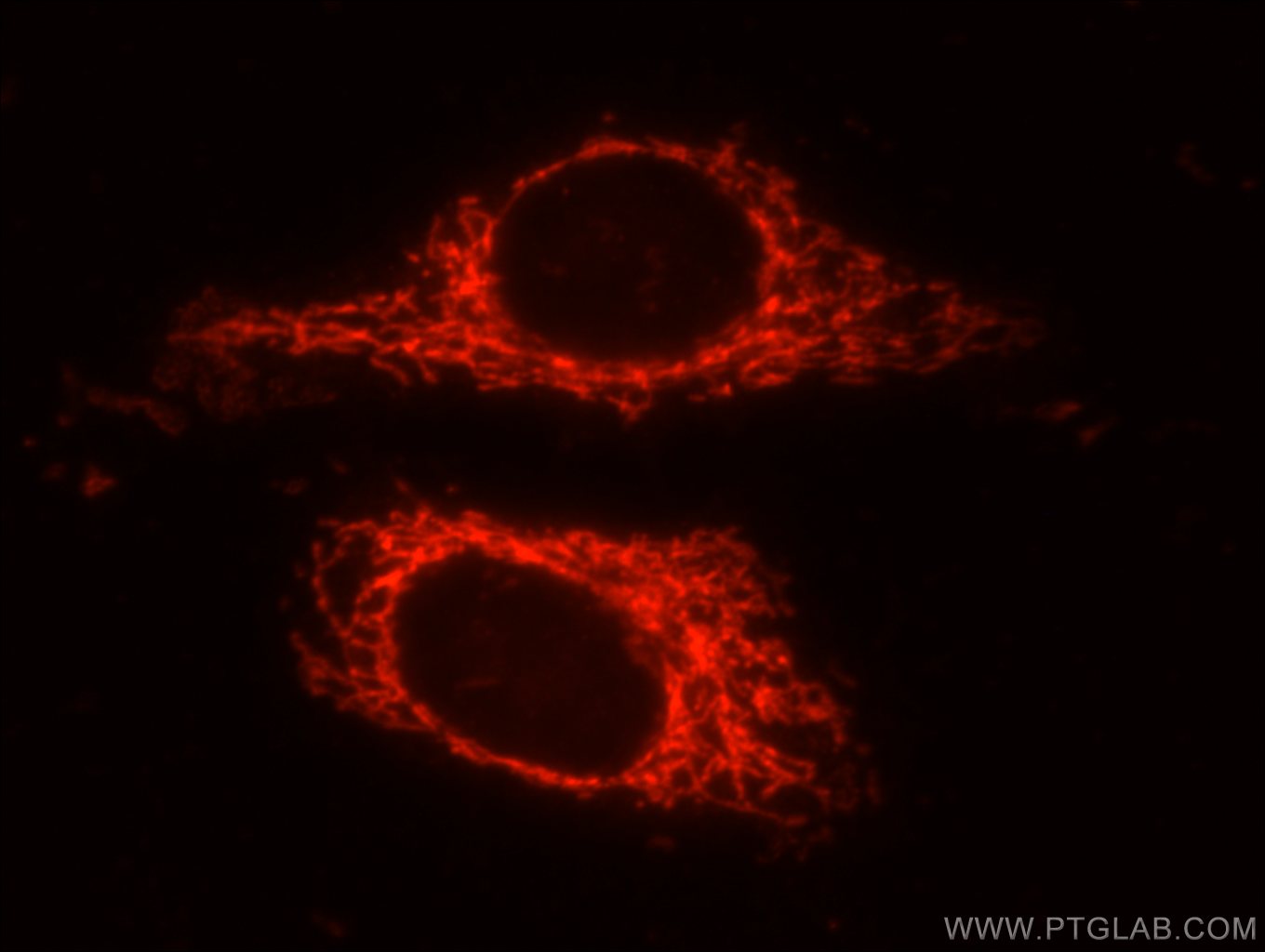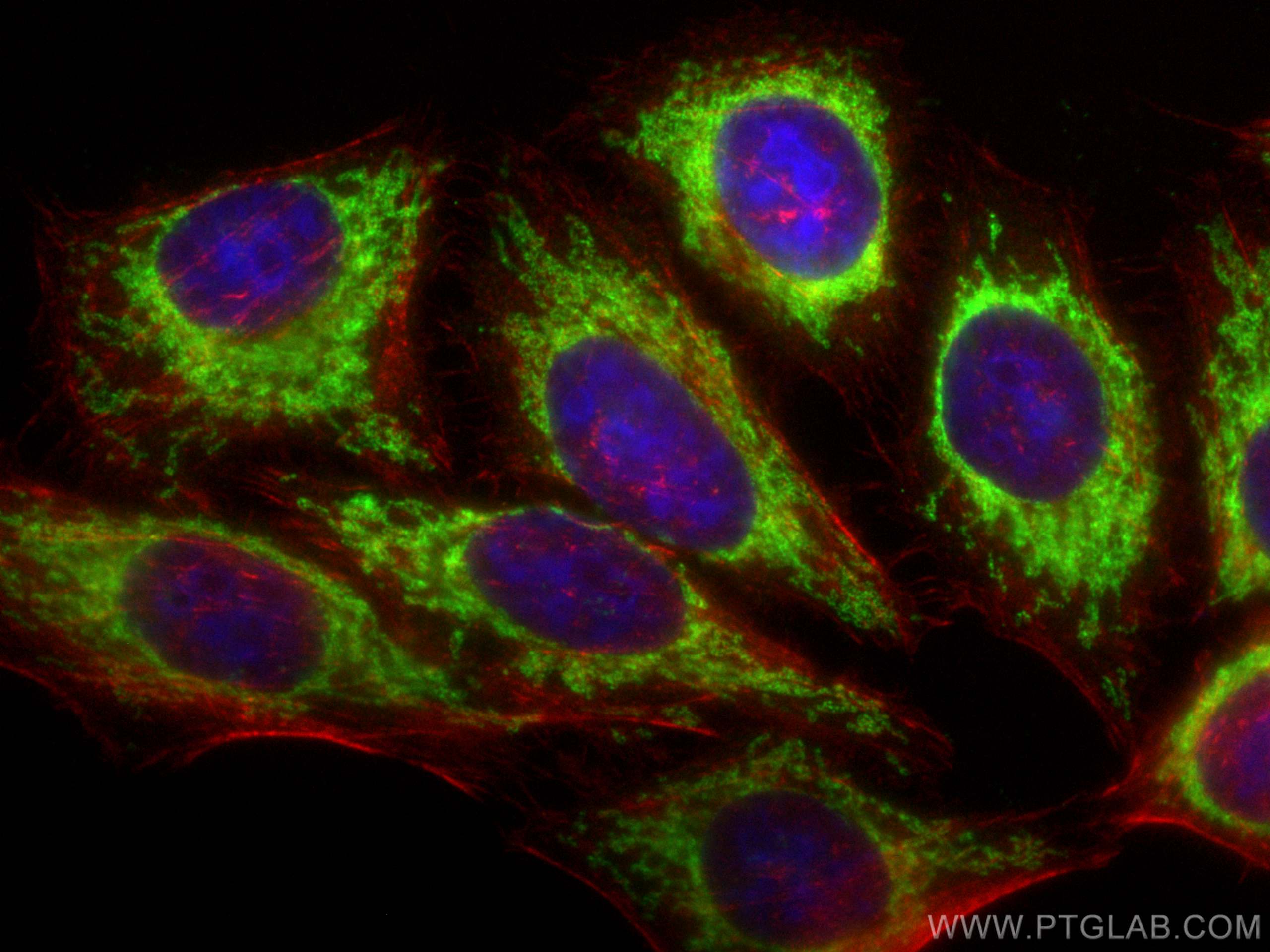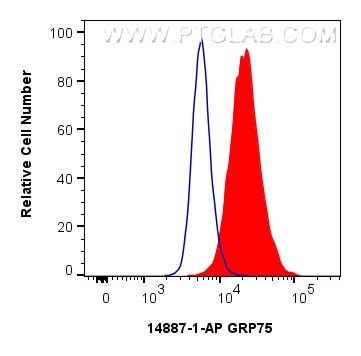- Phare
- Validé par KD/KO
Anticorps Polyclonal de lapin anti-GRP75
GRP75 Polyclonal Antibody for WB, IHC, IF/ICC, FC (Intra), IP, ELISA
Hôte / Isotype
Lapin / IgG
Réactivité testée
Humain, poisson-zèbre, rat, souris et plus (1)
Applications
WB, IHC, IF/ICC, FC (Intra), IP, CoIP, ELISA
Conjugaison
Non conjugué
N° de cat : 14887-1-AP
Synonymes
Galerie de données de validation
Applications testées
| Résultats positifs en WB | cellules HT-29, cellules A549, cellules Jurkat, cellules NIH/3T3, foie de souris, tissu testiculaire de souris |
| Résultats positifs en IP | tissu cérébral de souris, cellules NIH/3T3 |
| Résultats positifs en IHC | human normal colon, il est suggéré de démasquer l'antigène avec un tampon de TE buffer pH 9.0; (*) À défaut, 'le démasquage de l'antigène peut être 'effectué avec un tampon citrate pH 6,0. |
| Résultats positifs en IF/ICC | cellules HepG2, |
| Résultats positifs en FC (Intra) | cellules HepG2, |
Dilution recommandée
| Application | Dilution |
|---|---|
| Western Blot (WB) | WB : 1:5000-1:50000 |
| Immunoprécipitation (IP) | IP : 0.5-4.0 ug for 1.0-3.0 mg of total protein lysate |
| Immunohistochimie (IHC) | IHC : 1:2000-1:8000 |
| Immunofluorescence (IF)/ICC | IF/ICC : 1:200-1:800 |
| Flow Cytometry (FC) (INTRA) | FC (INTRA) : 0.20 ug per 10^6 cells in a 100 µl suspension |
| It is recommended that this reagent should be titrated in each testing system to obtain optimal results. | |
| Sample-dependent, check data in validation data gallery | |
Applications publiées
| KD/KO | See 3 publications below |
| WB | See 43 publications below |
| IHC | See 4 publications below |
| IF | See 11 publications below |
| IP | See 3 publications below |
| CoIP | See 1 publications below |
Informations sur le produit
14887-1-AP cible GRP75 dans les applications de WB, IHC, IF/ICC, FC (Intra), IP, CoIP, ELISA et montre une réactivité avec des échantillons Humain, poisson-zèbre, rat, souris
| Réactivité | Humain, poisson-zèbre, rat, souris |
| Réactivité citée | rat, Humain, poisson-zèbre, poulet, souris |
| Hôte / Isotype | Lapin / IgG |
| Clonalité | Polyclonal |
| Type | Anticorps |
| Immunogène | GRP75 Protéine recombinante Ag6673 |
| Nom complet | heat shock 70kDa protein 9 (mortalin) |
| Masse moléculaire calculée | 74 kDa |
| Poids moléculaire observé | 70-75 kDa |
| Numéro d’acquisition GenBank | BC000478 |
| Symbole du gène | GRP75 |
| Identification du gène (NCBI) | 3313 |
| Conjugaison | Non conjugué |
| Forme | Liquide |
| Méthode de purification | Purification par affinité contre l'antigène |
| Tampon de stockage | PBS with 0.02% sodium azide and 50% glycerol |
| Conditions de stockage | Stocker à -20°C. Stable pendant un an après l'expédition. L'aliquotage n'est pas nécessaire pour le stockage à -20oC Les 20ul contiennent 0,1% de BSA. |
Informations générales
GRP75 (also known as mortalin, HSPA9 or mt-Hsp70) is a constitutively expressed member of the HSPA (HSP70) family of heat-shock proteins. It is located in the mitochondrial matrix and anti-GRP75 is commonly used as the marker for mitochondria. It has been reported that GRP75 is enriched in cancer cells and contributes to carcinogenesis. In addition, decreased expression level of GRP75 has been found in neurodegenerative disorders like Parkinson's disease. This antibody recognized the endogenous GRP75 protein in NIH/3T3 cells. (PMID: 21640711, 22920904)
Protocole
| Product Specific Protocols | |
|---|---|
| WB protocol for GRP75 antibody 14887-1-AP | Download protocol |
| IHC protocol for GRP75 antibody 14887-1-AP | Download protocol |
| IF protocol for GRP75 antibody 14887-1-AP | Download protocol |
| IP protocol for GRP75 antibody 14887-1-AP | Download protocol |
| Standard Protocols | |
|---|---|
| Click here to view our Standard Protocols |
Publications
| Species | Application | Title |
|---|---|---|
Mol Cell The mitochondrial DNAJC co-chaperone TCAIM reduces α-ketoglutarate dehydrogenase protein levels to regulate metabolism
| ||
Cell Metab DNAJC19, a mitochondrial cochaperone associated with cardiomyopathy, forms a complex with prohibitins to regulate cardiolipin remodeling. | ||
EMBO Mol Med Excess hydrogen sulfide and polysulfides production underlies a schizophrenia pathophysiology. | ||
J Cell Biol Loss of OMA1 delays neurodegeneration by preventing stress-induced OPA1 processing in mitochondria. | ||
Cell Death Dis Pathological convergence of APP and SNCA deficiency in hippocampal degeneration of young rats |
Avis
The reviews below have been submitted by verified Proteintech customers who received an incentive for providing their feedback.
FH Lenie (Verified Customer) (07-18-2025) | IF worked. WB did not on zebrafish tissue and human patient. Could you perhaps provide me with another protocol?
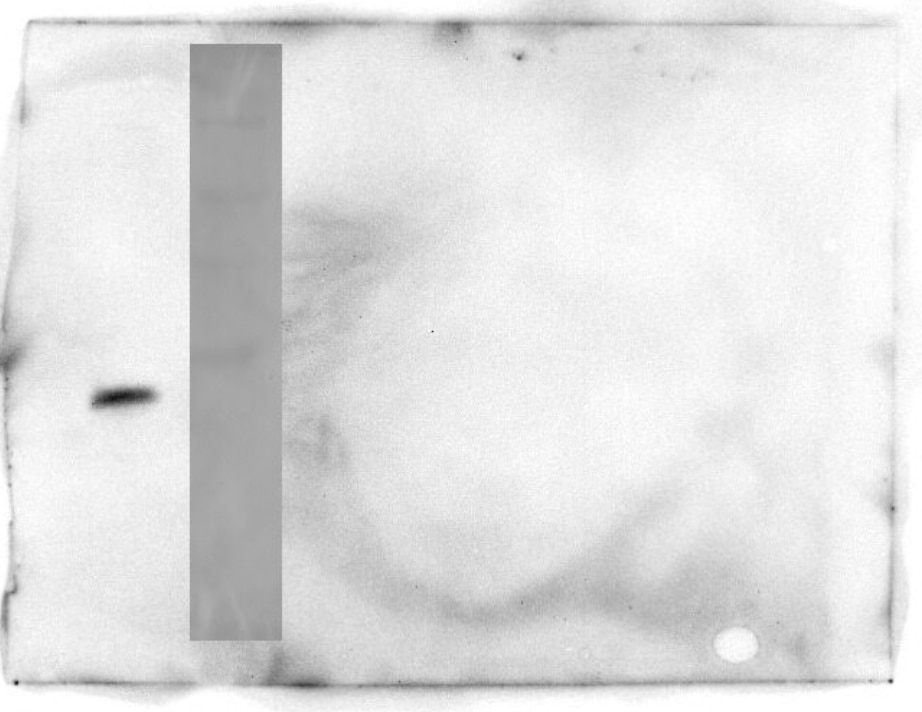 |
FH Anastasia (Verified Customer) (08-07-2024) | Deyolked zebrafish embryos
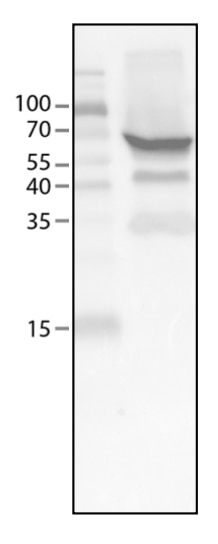 |
FH Christina (Verified Customer) (11-14-2023) | I used this antibody for HeLa extracts in Western Blot and worked perfectly.
|
FH Ning (Verified Customer) (02-27-2023) | Specifically probe endogenous GRP75 with a right MW.
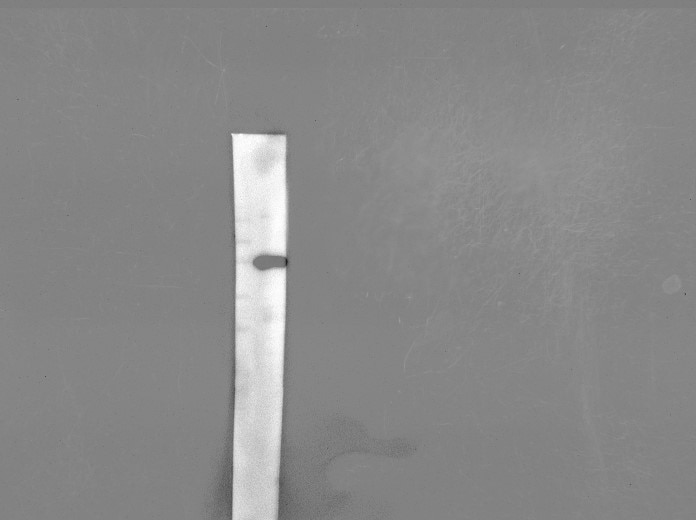 |
FH Staci (Verified Customer) (02-02-2023) | Antibody works very well with GRP75. Very little non-specific binding on immunoblot.
|
